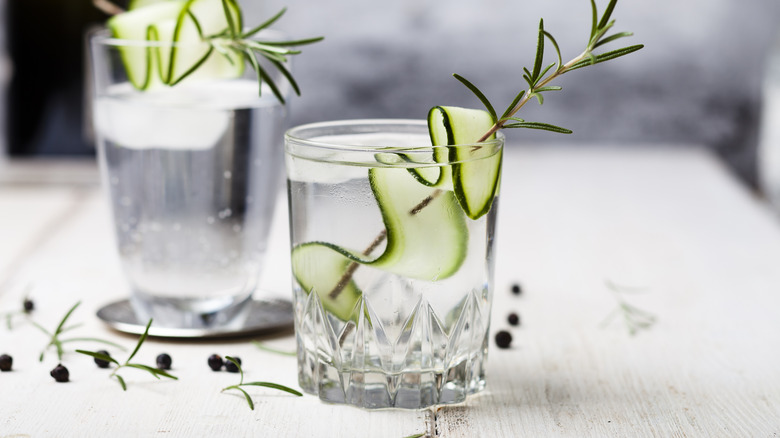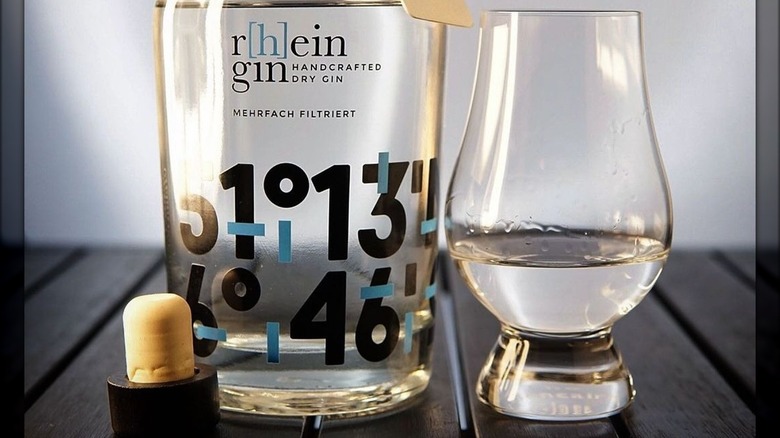When Drinking Gin Neat, Make Sure To Use The Right Glass
Gin is the alcohol of choice for an array of gin-based cocktails, but it can also be enjoyed neat. Unlike vodka, gin has a distinctive flavor profile of juniper berries and botanicals, and international gin distilleries often add herbs and spices that reflect their cultures. It would be a waste to dilute such sophisticated spirits with mixers and ice, and indeed connoisseurs recommend sampling different gins neat. But to truly appreciate a gin's complex taste, first research the distillery where it's made to ensure its gin is a high-quality product. Next, you'll need the right glass that's best suited for gin. And not all types of cocktail glasses are created equal when it comes to drinking gin neat.
Served in a tall glass, like a highball, the taste of the alcohol will be more prominent than the botanicals. The ideal glass for neat gin should allow the spirit's aroma to concentrate so you fully experience its unique qualities, such as a gin balloon glass or snifter. Generally, a pour for any neat spirit is about 2 ounces, and it's served in a low tumbler, like an old-fashioned glass or a rocks glass, which have thicker bottoms than other cocktail glasses and protect the gin from getting warmed by your hand. Since you probably won't be drinking more than two fingers of gin, the shape of the iconic Martini glass also allows the aromas to develop, and again, its long stem prevents the gin from heating up.
How to choose and properly taste gin
Gin gets its name from the French word for the juniper berry, "genièvre." It was first brewed in the 17th century by a Dutch doctor of medicine as an inexpensive juniper berry diuretic. English soldiers brought gin to England, and by the 18th century, it was drunk to such excess that it was blamed for a rise in poverty and crime. Higher-end distilleries produced better-quality gin, and by the 1830s, it was considered a sophisticated drink for gentlemen. Over the years, distilleries experimented with different botanicals and introduced flavored and colored gins, which you might consider if you haven't tried gin before. There are 11 main types of gin, and distilleries must follow strict regulations in production.
The European Union is particularly restrictive, especially for London gin, which is dry and juniper-forward. There are many great gins for sipping neat. Some are floral, while others have notes of citrus. Juniper berry must always be present in gin, and its taste can be a bit medicinal. But other herbs and spices, like coriander, anise, or green tea, soften and balance out the juniper so it's not so prominent. Once you've settled on which gin you want to drink, and you have the right glass, you can pour a couple ounces of room temperature gin. Before sipping, let all of its aromas gather together and breathe them in, then drink slowly to enjoy the gin's subtle qualities and ongoing allure.

